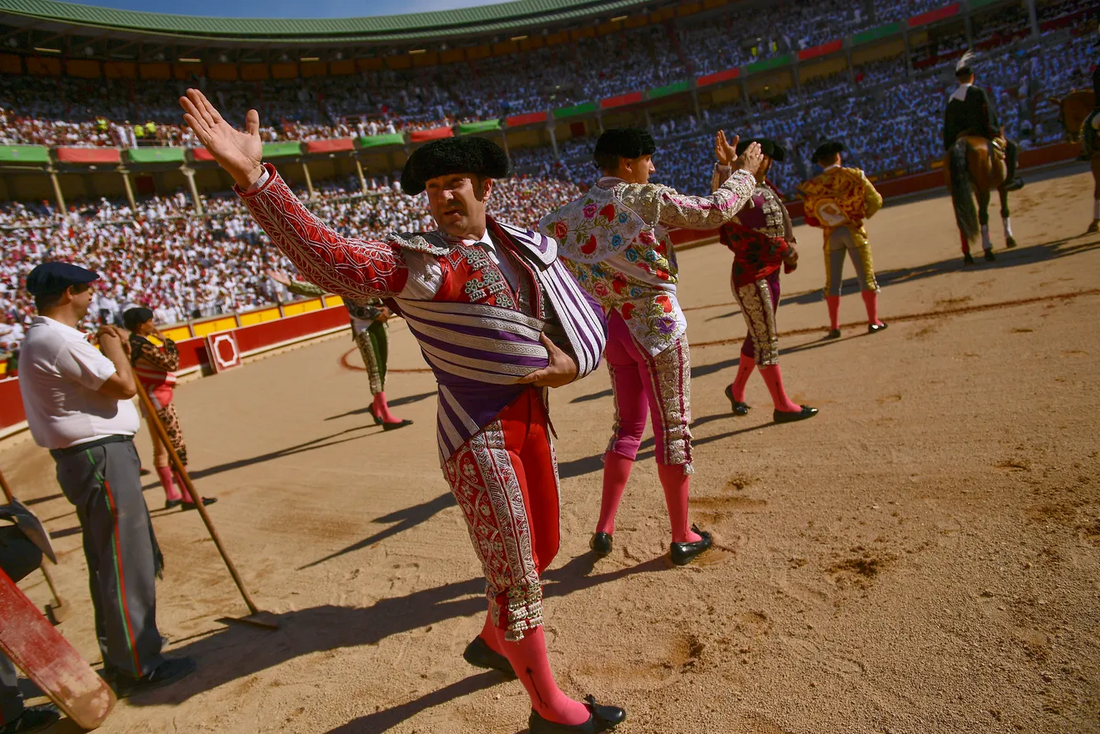
The significance of bullfighter outfits
Share
If you've ever seen bullfighters in pictures, in paintings, or on TV, you've surely noticed their extravagant, shimmering outfits. These outfits are called "trajes de luces" or "suits of lights," named after the way they glimmer in the sunlight, and they have been the traditional ensemble of bullfighters since the 18th century.
Every outfit worn by bullfighters is handmade, and assembling a single traje de luces can take dozens of people several months to complete. Some of these outfits are embroidered with up to 12 miles of thread, all expertly woven in elaborate patterns of flowers, Austrian knots, or symbols that are important to the bullfighter.
The components of the traje de luces include the black montera hat; the stiff, cropped jacket called the chaquetilla; the embroidered tights or taguilla, which are often fastened with tassles and supported with suspenders; the pink medias, or stockings; the Manoletinas de torero, or black ballet-style flats adorned with a bow; and the capote de paseo, a thick and often highly embroidered cape that is used during the procession at the start of each bullfight.
Moreover, the colors chosen for the outfit can hold deep symbolic meaning. Matadors may select specific colors based on superstitions or past successes in the ring. For example, wearing a color associated with previous victories can imbue the matador with confidence, while avoiding certain colors may be seen as a way to ward off bad luck. Some bullfighters prefer lighter colors in order to draw less attention from the bull, while others select vibrant hues to captivate the audience and enhance the visual spectacle of the bullfight.
Bullfighting outfits are not just aesthetic; they are designed to facilitate movement and protect the matador from the horns of the bull. The chaquetilla jacket, for instance, is tailored with deep vents (slits) to allow for freedom of movement, while also providing some level of protection to the torso. The taleguilla tights and stockings are designed to be form-fitting yet flexible, allowing the matador to run away from the bull or jump over the barrera (the wooden perimeter of the ring) if needed.
Trajes de luces are a product of both the deep cultural heritage and the physical requirements of this centuries-old tradition. If you attend a bullfight in Pamplona this July, take a moment to appreciate the expertise and craftsmanship that went into creating these iconic outfits.
